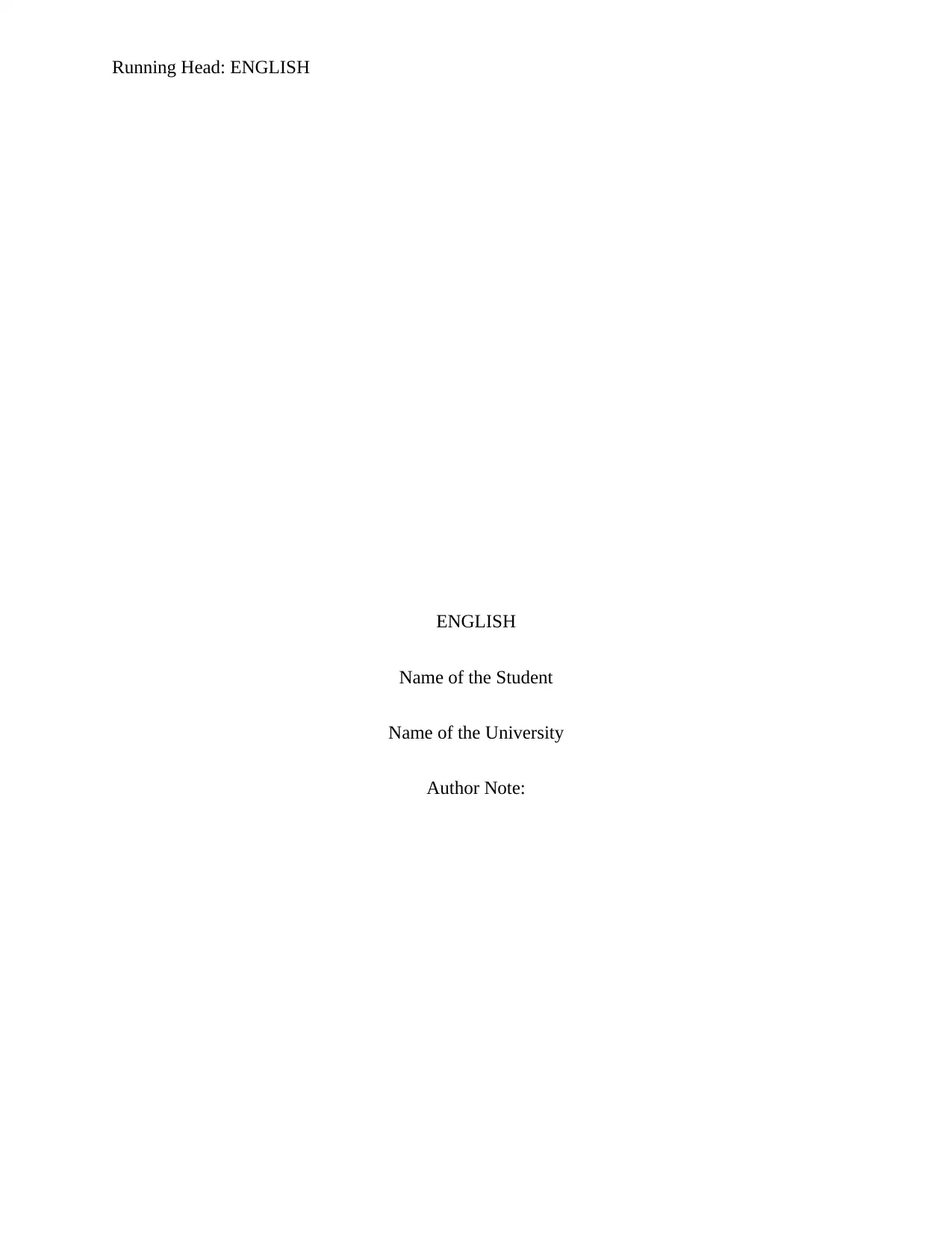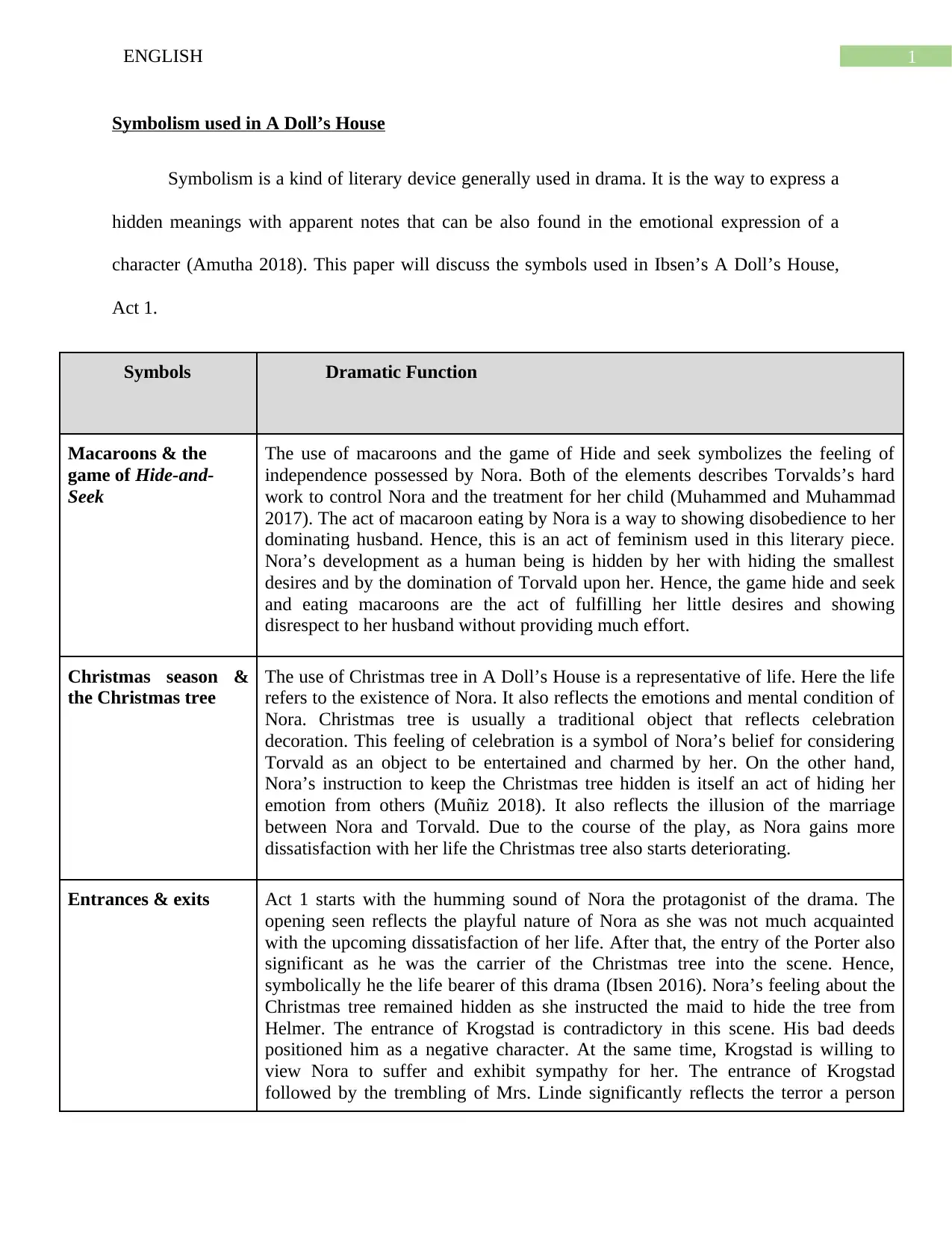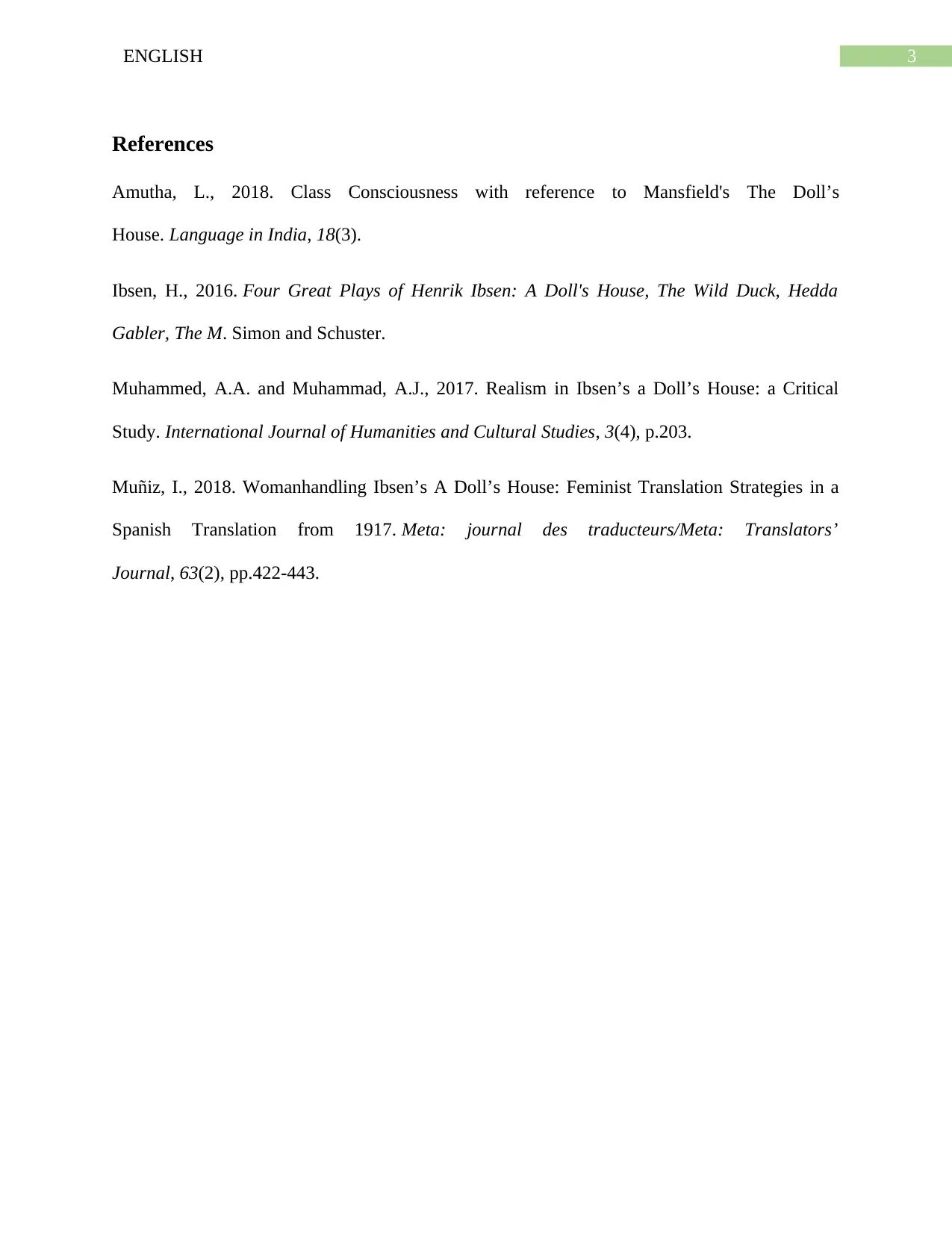A Deep Dive into Symbolism: Ibsen's A Doll's House, Act 1 Analysis
VerifiedAdded on 2022/08/18
|4
|722
|14
Essay
AI Summary
This essay explores the symbolism used in Henrik Ibsen's 'A Doll's House,' specifically focusing on Act 1. It analyzes the dramatic function of symbols such as macaroons, the game of hide-and-seek, the Christmas season, the Christmas tree, and the entrances and exits of characters. The macaroons and hide-and-seek symbolize Nora's suppressed independence and her subtle acts of rebellion against her husband, Torvald's, control. The Christmas tree represents Nora's life and emotional state, reflecting the initial celebratory illusion of her marriage that gradually deteriorates as she becomes more dissatisfied. Entrances and exits signify the introduction of new elements and the evolving dynamics between characters, such as the contrasting entrances of the Porter and Krogstad, and the friendship dynamic of Nora and Mrs. Linde. The essay provides a detailed interpretation of these symbols, highlighting their significance in conveying hidden meanings and extending the themes of the play.
1 out of 4










![[object Object]](/_next/static/media/star-bottom.7253800d.svg)